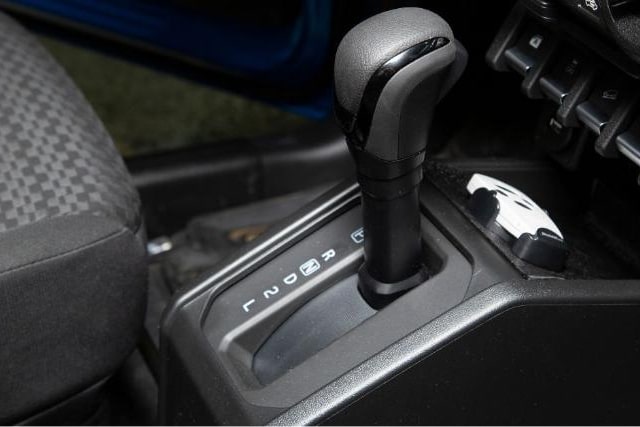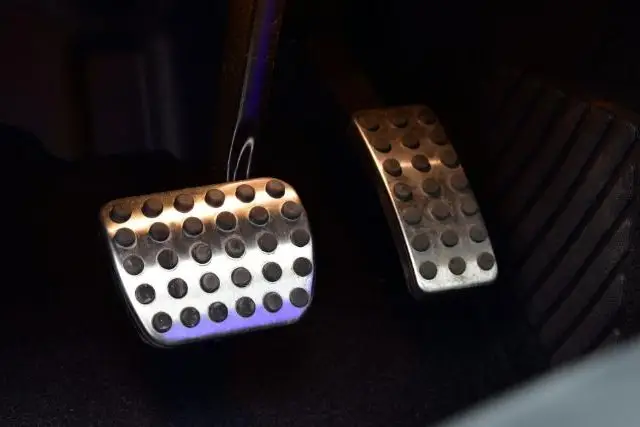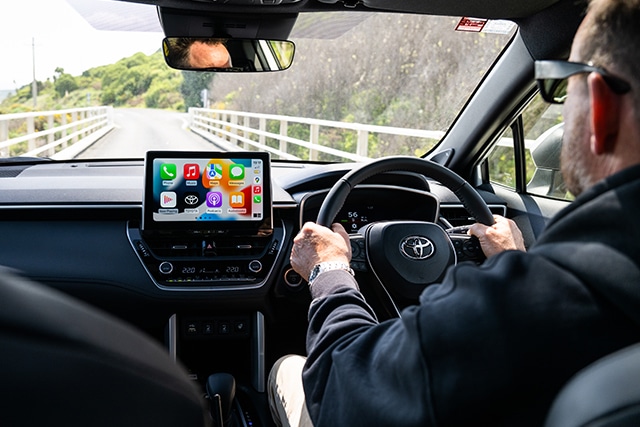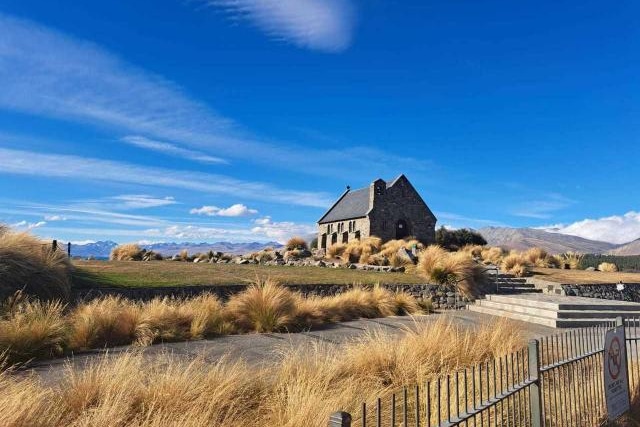New Zealand car rental companies – including GO Rentals – have automatic vehicles making up a large part of their fleet. For visiting drivers who are unfamiliar with driving automatic cars, some preparation is necessary.
Our complete guide will provide tips and advice for driving an automatic vehicle to help prepare you to get behind the wheel.
While our guide is an excellent starting point for driving automatic, remember that there’s no replacement for hands-on experience.
Additionally, please note that to rent a vehicle with GO Rentals, all overseas drivers must hold full, non-provisional driver’s licences. All licences must be in English or have an NZTA approved translation.
How to use pedals in an automatic car
The pedals of an automatic vehicle are simpler than those of manual cars. The accelerator is on the right, and the brake is on the left.
When you want the car to go faster, you put your foot on the accelerator. When you want the car to slow down or come to a complete stop, you put your foot on the brake.
When driving an automatic vehicle, you control both pedals on your right foot. Most vehicles have some form of footrest where your left foot remains when you are driving.
If you’re first learning to drive, you will need to get experience using the pedals driving in low-speed, quiet areas like large car parks. This will ensure you learn to safely accelerate and brake without speeding up or slowing down in unsafe ways.
For manual drivers transitioning to driving automatic, this isn’t a concern. However, you will need to get used to the absence of a clutch when driving with an automatic transmission.
How to use gearshift in an automatic car
The other key element of an automatic car is a gearshift. A gearshift in an automatic car is quite different to a gearstick in a manual car. They are much simpler to use.
A gearshift is used to change gears. When driving with an automatic transmission, drivers don’t need to change gears as often as when driving with a manual transmission.
This is because the automatic transmission changes between forward gears for you. However, the gearshift is still a critical part of driving with an automatic.
In right-hand drive vehicles, gearshifts are operated with the left hand. This means that apart from the small number of left-hand drive vehicles that are legally registered in New Zealand, gearshifts are operated with the left hand.
In an automatic car, a gearshift has letters and numbers next to it, denoting different gears. Commonly, your gearshift will have the following 6 selections:
- P – Park: This locks the transmission to prevent a car from moving. It should usually be used in conjunction with the vehicle’s handbrake.
- R – Reverse: When a car is in reverse gear, it will go backwards.
- N – Neutral: The neutral gear disconnects the engine from the wheels. This means the accelerator pedal will rev the engine, but won’t affect the speed of the car. The car can then move forward or backward without the influence of the engine if external force is applied. It can be used to idle a vehicle for purposes like towing.
- D – Drive: This function operates all forward gears of the vehicle. When your car is in drive, it will automatically shift between forward gears as necessary.
- 2 – Second: This function usually restricts the transmission to first and second gear. These gears offer more torque and control when driving, and can be used when driving in steep conditions.
- L – Low: Low will generally restrict the transmission to the lowest available gear, which is usually first gear. This maximises the torque and control of your vehicle and reduces your speed. It is therefore sometimes used in steep or off-road conditions or when towing something behind your car.
Gearshifts typically have buttons that must be pressed to take them out of park. In most cars, you will also need to have your foot on the brake to take the car out of park.
How is driving an automatic car different from driving a manual car?
Here are some of the most significant differences between driving automatic cars and manual cars:
- Automatic vehicles do not have a clutch pedal. When driving an automatic vehicle, drivers only need to use the accelerator and brake pedals. Manual drivers need to use the clutch to manage the connection of the engine to the transmission for smooth gear changes, among other roles it serves.
- Automatic vehicles have a gear shift which is simple to use when compared with a gear stick. Automatic drivers can remain in the drive function the vast majority of the time they are driving. Manual drivers must change gears as they drive much more frequently using a gear stick.
- In automatic vehicles, handbrakes are primarily used in conjunction with the park gear to prevent parked vehicles from moving. In manual vehicles, the handbrake is essential for preventing the car from moving when parked, as most manual cars don’t have functions to automatically lock the transmission. (Note that many newer models of cars come with electronic parking brakes, which automate many functions of traditional handbrakes such as automatically engaging when cars are turned off or if they are on inclines.)
- Handbrakes are also more frequently used for performing hill starts in a manual vehicle. However, automatic drivers can also make use of handbrakes for hill starts.
4 Expert Automatic Driving Tips
Now you have a broad understanding of how to drive an automatic car, here are a few additional tips to keep in mind when driving an automatic:
- If you’re renting an automatic vehicle for a self-driving holiday, make sure you have adequate experience before making your journey. While driving an automatic car is simpler than driving a manual car, you don’t want to be in a foreign country trying to get used to a new type of driving on top of everything else.
- While the park function of an automatic vehicle effectively locks the transmission, you should also use the handbrake every time you park.
- Automatic cars can slowly “creep” forward when stopped if the brake is not pressed down. Keep your foot on the brake at all times when stopped to prevent this.
- Ensure your vehicle is brought to a complete stop before shifting gears from drive to reverse. Failing to do so can damage the vehicle’s transmission.
Get on the road with New Zealand driving tips
Can’t wait to explore New Zealand in an automatic car? Here are a few of the most important points to be aware of before hitting travelling New Zealand roads:
- Ensure you always keep to the left-hand side of the road when driving in New Zealand. For tips to remember to stay on the correct side of the road, see our complete guide to driving on the left-hand side of the road.
- New Zealand has strict drink driving laws. Drivers under the age of 20 must have a blood alcohol level of 0. Drivers over the age of 20 have a limit of no more than 50 milligrams of alcohol per 100 millilitres of blood when driving and a breath alcohol limit of 250 micrograms (mcg) of alcohol per litre of breath.
- New Zealand roads can be quite different to roads in other countries. You can expect to find gravel roads in regional areas, long roads with a single lane in each direction, and icy conditions in winter requiring the use of snow chains.
- New Zealand has 3 toll roads. All 3 toll roads are in the vicinity of Auckland and Tauranga. With our $2/day Total Road Care package, you do not need to worry about paying for toll roads in your GO Rentals car. Read our toll road guide for a comprehensive understanding.
Travel New Zealand with ease with GO Rentals
GO Rentals is the perfect option for your New Zealand holiday. We offer a wide variety of easy-to-drive automatic vehicles including small cars, electric vehicles and 4-wheel drives.
We also offer perks to help make your journey as smooth as possible. This includes free basic rental insurance on all car rentals with upgraded coverage available. You can also take advantage of 24-hour roadside assistance and unlimited kilometres.
With 9 hire car locations in major New Zealand locations and one-way car rentals, it’s easy to craft the perfect itinerary for your getaway.
Don’t believe us? Just ask Tunda, an entrant in our Snap Happy photo competition:
“We took so many amazing photos along our 12-day journey from Auckland to Queenstown. Driving was the best decision because we would have missed so many beautiful places if we didn’t.
Having the freedom to plan and stop anywhere was great. Our car was great so the trip ran very smoothly.”
Book your GO Rentals vehicle today and kickstart your Kiwi adventure.
Frequently asked questions
Can I drive in New Zealand with an overseas licence?
Yes, holders of overseas licence holders can drive in New Zealand for 12 months without needing to transfer to a New Zealand licence.
The same rules apply to holders of International Driving Permits. If you are driving in New Zealand with an International Driving Permit, you must carry your licence, too. If your licence is not in English, you must also carry an NZTA approved translation.
We have complete guides for driving in New Zealand with licences from the following countries:
What does “L” mean in an automatic car?
The letter “L” on an automatic gearshift stands for low. This will generally restrict the transmission to the lowest available gear, which is usually the first gear.
This function provides higher torque and lower speeds, making it ideal for steep or off-road conditions, or if your vehicle is towing something behind it.
What does “S” mean in an automatic car?
Some automatic cars have an “S” on the gearshift. This is generally used to put the car into “sport mode”. Sport mode is different from one vehicle to the next, so it’s best to consult your owner’s manual or contact your vehicle manufacturer for more information about what it means in your car.
Sport mode can offer faster acceleration, greater responsiveness and improved handling. It can also result in reduced fuel efficiency.
Book a vehicle for this trip
We recommend:
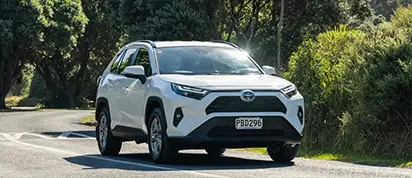
Intermediate 4×4 Hybrid
Toyota Rav4 AWD Hybrid
- Seats
- 5 seats
- Large Bags
- 3
- Small Bags
- 4
- Transmission
- Auto trans
